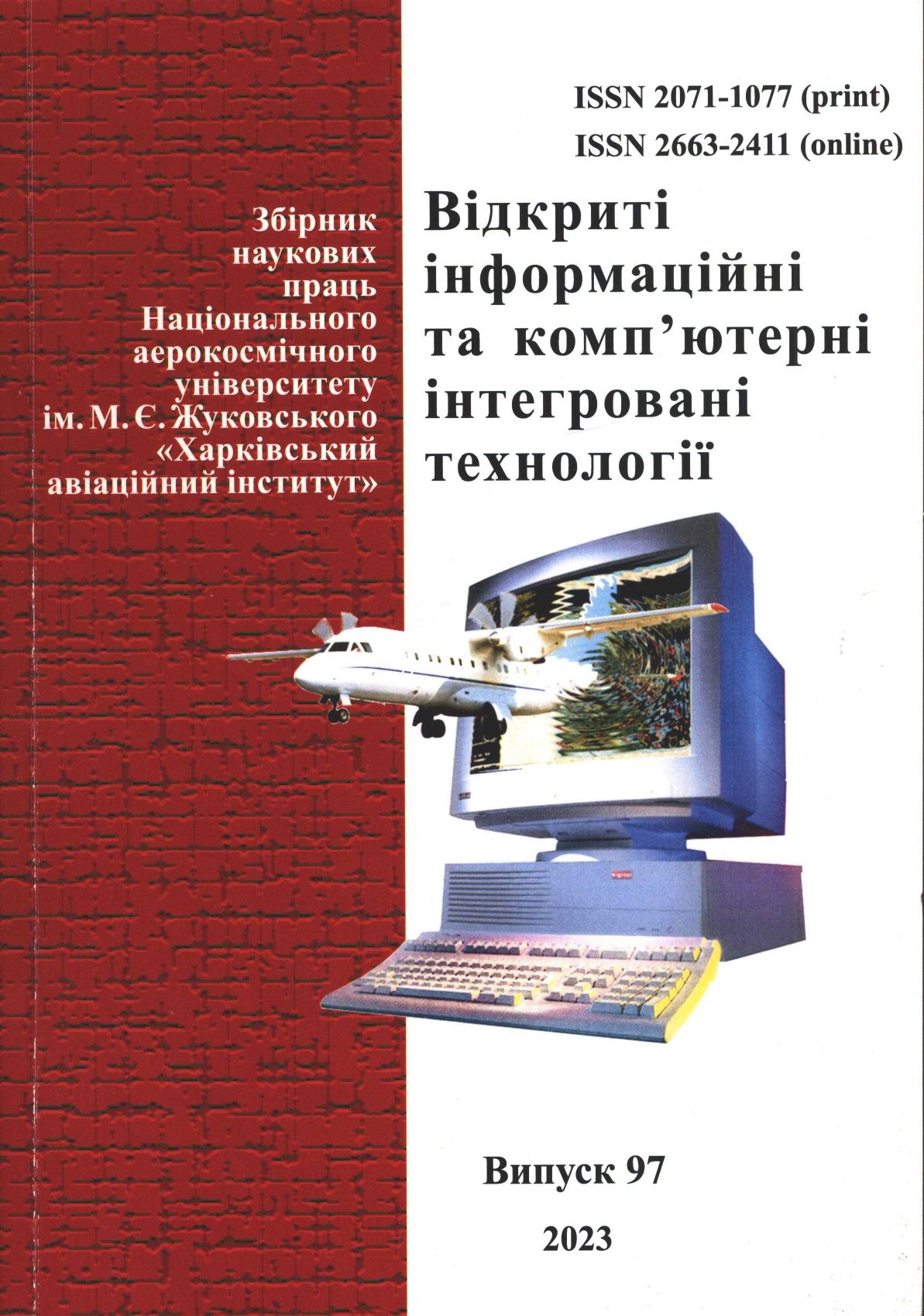Особливості проєктування механізації крила літаків транспортної категорії
Abstract
У роботі проведено аналіз методів проєктування механізації крила літаків транспортної категорії. Проаналізовано компонування крила з розміщенням засобів механізації крила по передній і задній кромках крила. Розглянуто специфічні вимоги до агрегатів механізації крила. В аналізі враховано вимоги експлуатації літаків, що забезпечують легкий доступ для огляду агрегатів механізації та механізмів їх навішування. Підкреслена необхідність постійного контролю синхронної роботи всіх секцій механізації та забезпечення плавного їх переміщення. Проєктування засобів механізації будь-якого типу передбачає одночасне розв'язання низки завдань розроблення: кінематичної схеми, системи установлення та керування, конструкції опор і власне пристрою. У більшості випадків розробляються також і механізми приводу. Проєктування нового літака є багатоетапним ітераційним процесом,
що містить «зовнішнє проєктування», розроблення технічної пропозиції, ескізне
проєктування, робоче проєктування, виготовлення дослідних екземплярів літака, його наземні і льотні випробування, в ході яких визначаються фактичні характеристики літака та ступінь його відповідності технічному завданню. Розглянути переваги, які створюють засоби механізації крила. Розглянуто механізацію Ан-140 як представника літаків, крила яких мають механізацію задньої кромки, але не мають механізації передньої. Також розглянуто механізацію Ан-74 як представника літаків, які в якості механізації використовують двощильові або трьохщильові висувні закрилки, передкрилки або носові щитки великої кривизни по всьому розмаху крила. Охарактеризовано технології проєктування в інтегрованих комп'ютерних інформаційних системах, що дозволяють побудувати єдиний процес комп'ютерного моделювання і інженерного аналізу та проводити багатоваріантні дослідження для вибору оптимальних конструктивних рішень в достатньо стислі терміни. Запропоновано блок-схема процесу робочого проєктування закрилків. The paper analyses the methods of designing wing mechanisation for transport
category aircraft. The wing layout with the placement of wing mechanisation means on the leading and trailing edges of the wing is analysed. Specific requirements for wing
mechanisation units are considered. The analysis takes into account the requirements
of aircraft operation, which provide easy access to inspect the mechanisation units and
their attachment mechanisms. The need for constant monitoring of the synchronous
operation of all mechanisation sections and ensuring their smooth movement is
emphasised. The design of any type of mechanisation means involves the
simultaneous solution of a number of development tasks: kinematic scheme,
installation and control system, support structure and the device itself. In most cases,
the drive mechanisms are also developed. The design of a new aircraft is a multi-stage
iterative process that includes external design, development of a technical proposal,
preliminary design, detailed design, production of prototypes, ground and flight tests,
which determine the actual characteristics of the aircraft and the degree of its
compliance with the technical specifications. Consider the advantages created by wing
mechanisation equipment. The mechanisation of the AN-140 is considered as a
representative of aircraft whose wings have trailing edge mechanisation but no leading
edge mechanisation. The mechanisation of the AN-74 is also considered as a
representative of aircraft that use two- or three-slotted retractable flaps, winglets or
nose shields of large curvature over the entire wing span. The design technologies in
integrated computer information systems are characterised, which allow to build a
single process of computer modelling and engineering analysis and to conduct
multivariate studies to select optimal design solutions in a sufficiently short time. A
block diagram of the process of detailed design of flaps is proposed.

